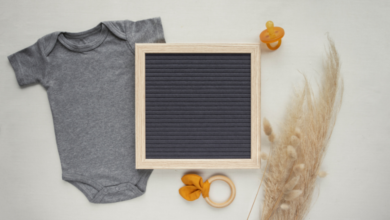Postpartum Hair Loss And The Things You Should Know
Introduction
Welcoming a new baby into the world is an exhilarating experience, but it comes with a range of physical and emotional changes. Among the many surprises new mothers face, postpartum hair loss can be particularly distressing. Hair that once seemed abundant may begin to shed at an alarming rate, leaving many women worried and confused. However, this condition is both common and temporary. Understanding the causes, the duration, and the ways to manage postpartum hair loss can help alleviate concerns and guide new mothers through this phase with confidence.
Understanding Postpartum Hair Loss
Postpartum hair loss, medically known as telogen effluvium, is a natural part of the postpartum period. Typically, women begin to notice increased hair shedding around two to four months after giving birth. While it may feel like you’re losing an excessive amount of hair, it’s essential to understand that this is a temporary condition and a normal response to the hormonal changes your body undergoes after childbirth.
During pregnancy, elevated levels of estrogen prolong the growth phase (anagen phase) of hair. This means that less hair falls out, leading to thicker, fuller hair. After childbirth, estrogen levels drop sharply, and the hair that had remained in the growth phase shifts into the resting phase (telogen phase) and eventually sheds. This sudden shift is what causes the noticeable hair loss in the months following delivery.
Duration of Postpartum Hair Loss
The duration of postpartum hair loss varies from woman to woman. For most, the shedding peaks around three to four months postpartum and gradually diminishes over the following months. By the time your baby reaches their first birthday, your hair should have returned to its pre-pregnancy thickness. However, for some women, the shedding may continue at a reduced rate for up to a year or more. It’s important to note that while your hair may not return to exactly how it was before pregnancy, it will normalize.
Common Misconceptions
There are several misconceptions about postpartum hair loss that can cause unnecessary worry:
- Myth: Breastfeeding causes hair loss.
- Reality: Breastfeeding does not cause postpartum hair loss. The shedding is due to hormonal changes, not breastfeeding.
- Myth: Hair loss indicates a nutritional deficiency.
- Reality: While nutrition plays a role in overall hair health, postpartum hair loss is not typically due to a deficiency but rather the natural postpartum hormonal adjustment.
- Myth: You’re losing hair permanently.
- Reality: Postpartum hair loss is temporary, and hair regrowth usually follows.
Managing Postpartum Hair Loss
Although postpartum hair loss is a natural process, there are steps you can take to manage the condition and keep your hair healthy during this transition:
- Gentle Hair Care
- Treat your hair with extra care during this period. Avoid excessive brushing, heat styling, or tight hairstyles that can stress your hair and exacerbate shedding. Use a wide-toothed comb to gently detangle your hair and opt for loose hairstyles that don’t pull on the scalp.
- Balanced Diet
- A nutritious diet rich in vitamins and minerals is essential for hair health. Focus on foods high in vitamins A, C, D, and E, as well as iron, zinc, and omega-3 fatty acids. These nutrients support hair growth and overall health. Foods like leafy greens, nuts, seeds, fish, and eggs can be particularly beneficial.
- Supplements
- If your diet is lacking in certain nutrients, consider taking supplements designed for postpartum women. Biotin, in particular, is known to support hair health. However, always consult with your healthcare provider before starting any new supplements, especially if you’re breastfeeding.
- Stress Management
- Stress can exacerbate hair loss, so it’s crucial to find ways to relax and manage stress. Practices like yoga, meditation, deep breathing exercises, and regular physical activity can help reduce stress levels and promote overall well-being.
- Consider a New Hairstyle
- Many women find that opting for a shorter haircut during this period makes their hair look fuller and easier to manage. A shorter style can also reduce the weight of your hair, which may help lessen the appearance of thinning.
- Topical Treatments
- Certain topical treatments, like minoxidil, can stimulate hair growth. However, these are typically not recommended for use during breastfeeding. Always consult with your healthcare provider before using any hair growth treatments.
When to See a Doctor
While postpartum hair loss is generally not a cause for concern, there are instances where you should consult a healthcare provider:
- Excessive Shedding: If you feel that your hair loss is excessive or continues beyond one year postpartum, it’s a good idea to see a doctor. There could be underlying conditions, such as thyroid imbalances or anemia, contributing to the hair loss.
- Other Symptoms: If you experience other symptoms, such as fatigue, weight changes, or mood swings, along with hair loss, it could indicate a hormonal imbalance or other health issues that need medical attention.
Emotional Impact of Postpartum Hair Loss
The emotional impact of postpartum hair loss should not be underestimated. For many women, their hair is a significant part of their identity, and losing it can be distressing. This is compounded by the fact that new mothers are already navigating a range of emotions and physical changes.
It’s important to remember that you are not alone. Postpartum hair loss is a common experience, and many women go through it. Sharing your concerns with friends, family, or a support group can help you feel more supported during this time. Additionally, focusing on self-care and nurturing your body can help boost your confidence as you adjust to your postpartum body.
Looking Ahead: Hair Regrowth
The good news is that hair regrowth is a natural part of the postpartum process. As your hormone levels stabilize, your hair will gradually return to its normal growth cycle. Patience is key, as it can take several months for hair to regrow and for any bald spots or thinning areas to fill in.
During this time, it’s important to continue with good hair care practices and maintain a healthy lifestyle. This not only supports hair regrowth but also enhances your overall well-being as you adjust to motherhood.
Conclusion
Postpartum hair loss can be an unsettling experience, but it’s important to remember that it is a temporary phase. Understanding the causes and managing the condition with gentle hair care, a balanced diet, and stress management can help you navigate this period with greater ease. While it may take some time for your hair to return to its pre-pregnancy state, rest assured that regrowth will occur, and you will regain your confidence.
As you embark on this new chapter of motherhood, remember that your body is incredibly resilient. It has nurtured and brought a new life into the world, and with time, it will adjust and recover. Embrace the journey, take care of yourself, and know that this too shall pass.




